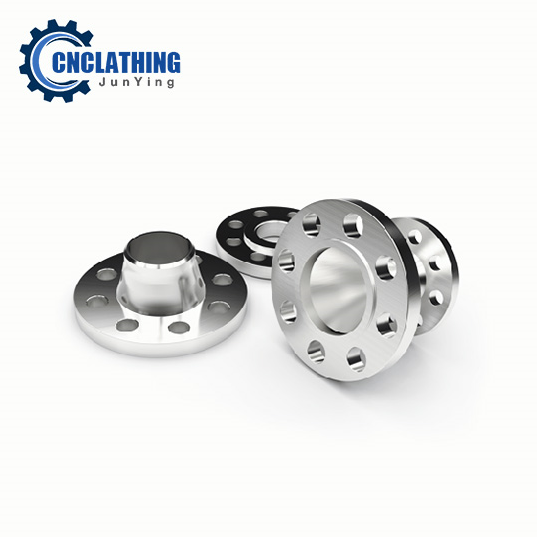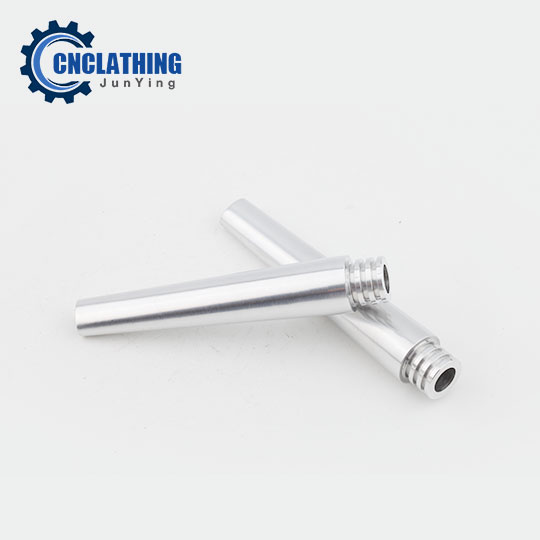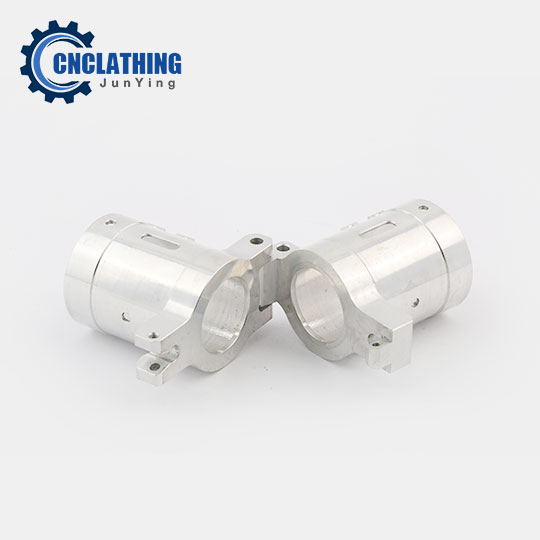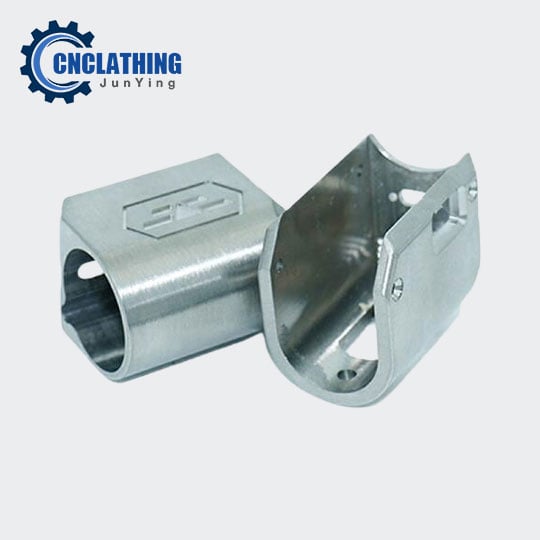Metal Heat Treatment Basics & Guide – Stages and Types
Industry-Leading Heat Treatment Services for Metals & Alloys
CNCLATHING (Junying Metal Manufacturing Co., Limited) offers industry-leading heat treatment services for metals and alloys, designed to enhance the performance, strength, and durability of your products. With years of expertise and ISO-certified processes, we provide a wide range of in-house heat treatments, including case hardening, quenching, vacuum heat treatment, and more, customized to meet the specific demands of industries such as aerospace, automotive, military, energy, industrial, heavy equipment, tools, CNC machining, and die casting parts. Our meticulous heat treating processes, such as normalizing, annealing, and stress relieving, improve material properties like hardness, wear resistance, and ductility, ensuring longer service life and superior performance of components. From strengthening aerospace parts to increasing the durability of heavy machinery, our state-of-the-art facilities and expert metallurgists deliver precise, repeatable results to meet your exact specifications. For businesses seeking cost-effective and high-quality heat treatment solutions, CNCLATHING is your trusted partner for thermal processing excellence as one of the leading heat treatment suppliers from China!

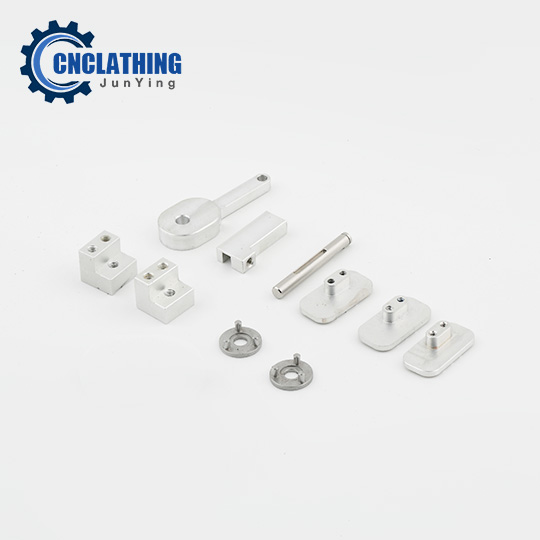
What is Heat Treatment?
Heat treatment is a controlled process used to alter the microstructure of metals and alloys, such as steel and aluminum, to improve their physical and mechanical properties. These treatments are essential for increasing surface hardness, ductility, temperature resistance, and strength, making the material more suitable for its intended application. At CNC Lathing, we use cutting-edge technologies to deliver precise and reliable heat treatment solutions across a variety of industries, from aerospace to automotive.
Benefits of Heat Treatment:
- Increased strength and hardness
- Improved ductility and toughness
- Enhanced wear and corrosion resistance
- Stress relief to prevent distortion or cracking
Types of Heat Treatment Processes (Our Heat Treatment Capabilities)
As one of the best heat treatment providers from China, we offer a wide range of heat treatment processes, each designed to achieve specific results. Our in-house capabilities allow us to deliver repeatable, high-precision treatments tailored to your exact specifications.
Choose Customized Heat Treatment Methods for Your Projects
Each heat treatment method offers specific advantages depending on the material and the desired properties Check out the table, to choose the appropriate heat treadment process depends on factors such as the type of metal, the intended application, and the mechanical properties required for your products.
| Method | Purpose | Process Overview | Common Applications |
|---|---|---|---|
| Annealing | Soften, improve ductility, relieve stress | Heating to a specific temperature, slow cooling | Steel, copper, aluminum, brass |
| Normalizing | Refine grain structure, improve toughness | Heating above critical temperature, air cooling | Steel, cast iron |
| Quenching | Increase hardness | Rapid cooling after high-temperature heating | Tools, machinery, structural parts |
| Tempering | Reduce brittleness, improve toughness | Reheating quenched metal to a lower temperature, slow cooling | Tools, blades, springs |
| Case Hardening | Harden surface, tough core | Carburizing, nitriding, or induction hardening | Gears, camshafts, bearings |
| Stress Relieving | Reduce internal stress | Heating to a lower temperature, slow cooling | Weldments, castings |
| Precipitation Hardening | Increase strength and hardness | Heating to an intermediate temperature, holding, slow cooling | Aerospace, automotive components |
| Austempering | Improve toughness, reduce distortion | Quenching in a molten salt bath, holding until bainite forms | High-strength steel parts |
| Martempering | Reduce cracking and distortion | Quenching just above martensite point, slow cooling | Tools, dies |
| Cryogenic Treatment | Enhance hardness, wear resistance | Cooling to cryogenic temperatures | Cutting tools, aerospace components |
| Flame Hardening | Surface hardening | Heating surface with flame, rapid quenching | Shafts, gears |
| Induction Hardening | Surface hardening | Electromagnetic induction heating, rapid quenching | Gears, shafts, bearings |
Applications of Our Heat Treatment Services
Our heat treatment services are utilized across a diverse range of industries to improve the performance, longevity, and reliability of metal components. Below are some key industries we serve:
Aerospace – We provide heat treatment services for flight-critical components such as gears, shafts, and landing gear parts. Our treatments ensure optimal strength, fatigue resistance, and safety for aerospace applications, including turbines and fasteners.
Automotive – Our heat treatments enhance the wear resistance, strength, and durability of parts like gears, axles, engine components, and transmission parts. We deliver high-quality solutions for carburized gears, water pump shafts, and universal joints.
Construction – Heat treatment processes like annealing, normalizing, and quenching improve the strength and durability of construction materials and equipment, such as structural steel, machinery components, and earth-moving equipment.
Military – We provide heat treatment solutions for armor, weapons, and military vehicles, ensuring that critical components are strong, durable, and able to withstand extreme conditions. Processes like quenching, tempering, and surface hardening are commonly used for military hardware and defense equipment.
Energy (Oil & Gas) – Our heat treatment services improve the performance of critical components used in the oil & gas sector, including pipes, valves, and drill bits. Stress relieving, quenching, and precipitation hardening are widely used to enhance the wear resistance and durability of equipment used in harsh environments.
Electronics – In the electronics industry, heat treatment processes are used to enhance the properties of materials like copper and aluminum for better conductivity, durability, and performance in electronic components like connectors, wires, and heat sinks.
Medical Devices – We offer precise heat treatments for medical instruments and implants, ensuring they meet stringent industry standards. Processes like annealing, tempering, and vacuum heat treatment improve the corrosion resistance, strength, and biocompatibility of materials used in surgical tools, implants, and diagnostic equipment.
Industrial & Heavy Equipment – For heavy machinery and industrial applications, we offer heat treatments that improve the strength and durability of large components like gears, shafts, and bearings, ensuring they can withstand heavy loads and extreme conditions.
Rail – Our heat treatment services extend the service life and wear resistance of rail components such as bearing assemblies, diesel engines, and rail clips, ensuring long-term performance in a demanding environment.
Tool & Die – We specialize in heat treatments for tool and die applications, ensuring that tools like extrusion dies, stamping tools, and welding fixtures maintain optimal hardness and wear resistance.
Related News
FAQs
How Does the Heat Treatment Process Work?
The heat treatment process involves heating metal components to a specific temperature, holding them at that temperature for a certain period, and then cooling them in a controlled manner. The goal is to modify the metal’s internal structure, making it more suitable for its final application. Our team of metallurgists and engineers work closely with you to determine the ideal heat treatment method based on factors such as material composition and the required mechanical properties.
Steps in the Heat Treatment Process:
- Cooling: The material is cooled at a controlled rate, either by air, water, oil, or other mediums, depending on the desired outcome. Some processes, like quenching, involve rapid cooling to increase hardness, while others may involve slow cooling to reduce brittleness.
- Heating: The metal is heated to a specific temperature, which depends on the type of metal and the desired properties.
- Soaking: The metal is held at the target temperature to allow the internal structure to transform.
What is the Purpose of Heat Treatment?
Heat treatment is used to modify the physical and mechanical properties of metals to make them more suitable for specific applications. This includes improving hardness, strength, ductility, and wear resistance.
What Types of Materials Can Be Heat-Treated?
Most metals and alloys can undergo heat treatment, including steel, aluminum, stainless steel, copper, and brass.
What is the Difference Between Annealing and Normalizing?
Annealing softens the metal and improves ductility, making it easier to work with. Normalizing, on the other hand, refines the grain structure and enhances toughness, providing more consistent mechanical properties.
How does Quenching Improve Metal Properties?
Quenching rapidly cools the metal, increasing its hardness and strength. It is particularly useful for steel parts that need to withstand high wear and stress.
What Industries Benefit from Heat Treatment?
Heat treatment is used in numerous industries, including aerospace, automotive, rail, industrial machinery, heavy equipment, and tool and die manufacturing.
Why Choose Our Heat Treatment Services?
Our in-house heat treatment capabilities ensure that we can process your parts from start to finish, reducing supply chain complexity and ensuring consistent, high-quality results. Our state-of-the-art facilities and expert metallurgists deliver precise and reliable heat treatment processes, making us a trusted partner for industries that require the highest standards of quality and performance.
Key Benefits of Our Heat Treatment Processes:
- Customized Solutions: We tailor our processes to meet your exact specifications, ensuring that every component meets its functional and operational requirements.
- Improved Material Strength: We enhance the mechanical properties, wear resistance, and toughness of metals to ensure they perform optimally under stress.
- Extended Component Life: Our treatments help prevent cracking, reduce wear, and minimize dimensional changes, providing longer-lasting components.






